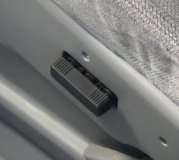It's doubtful you did anything other than beat yourself up mentally. If the 15 amp fuse was blown, there was already a problem and it blew for a reason. If there was no problem, the fuse would not have been blown, and you wouldn't have stuck the larger fuse in there. If there was no problem, inserting a larger fuse would not cause any damage to anything.
When there is a sudden direct short, a 25 amp fuse is going to blow and protect the wiring. The only time a larger fuse will allow, (not cause), damage to occur is when there is an overload but not a direct short. If, for example, you add a pile of running lights to the tail lamp circuit, there's no short, but each bulb will add to the amount of current flowing in that circuit, and you might end up with 20 amps flowing through wires that are only capable of handling 15 amps. THAT'S where the larger fuse will allow the wires to overheat.
You left out a lot of needed information, like did the 25 amp fuse blow too? What was the symptom that started all this? Did you check for blown fuses inside and under the hood? Where was that 15 amp fuse, inside or under the hood?
The fuses inside protect smaller circuits, and many of them are tapped off larger fuses under the hood that each protect multiple circuits. That means you might have had one dead circuit due to the blown 15 amp fuse, but with the larger one in there, the fuse under the hood blew and took out the other circuits that tap off from it.
Tuesday, February 24th, 2015 AT 11:07 PM


